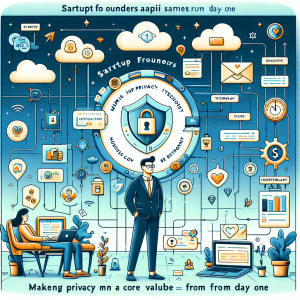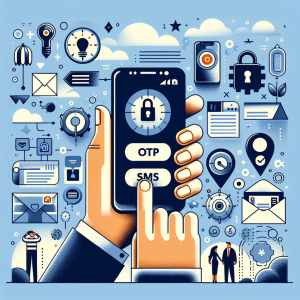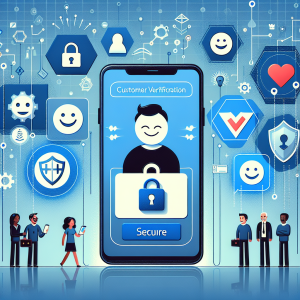In today’s hyper-competitive digital landscape, SaaS product managers are under perpetual pressure to deliver secure, scalable, and seamless experiences to users. However, operational bottlenecks often undermine this vision—notably during user verification and onboarding. This blog draws from a real-life case study to illustrate how one SaaS company leveraged non-VoIP phone numbers to significantly improve productivity, automation success, and user experience.
The Problem: Onboarding Abuse and Verification Friction
A mid-sized SaaS provider in the collaboration space—referred to here as CollabSync—faced a growing challenge. Their platform was experiencing a surge in fraudulent signups due to loopholes in their identity verification process. The verification system relied heavily on VoIP-based phone numbers, and it became an exploit vector for bots and fraudulent actors who could easily spoof such numbers to create multiple fake accounts.
Beyond security concerns, this loophole created operational inefficiencies. The support team was overwhelmed with user complaints about failed or delayed SMS code deliveries. Identity verification failure rates spiked to 14%, and average onboarding time increased by 27 seconds per user—seemingly small, but significant at scale. Productivity was declining, and so was user trust.
The Strategy: Integrating Non-VoIP Phone Numbers
CollabSync turned to an external solution: integrating a phone verification system via verify-now.com that emphasized non-VoIP phone numbers. These are legitimate phone numbers associated with physical SIM cards and real international carriers—ensuring higher authenticity than VoIP counterparts.
The move was strategic for two reasons:
- Higher Assurance: Non-VoIP numbers are significantly harder for fraudsters to spoof or generate at scale.
- Improved Deliverability: SMS and voice verification messages to non-VoIP numbers have a higher delivery success rate, reducing onboarding failures and increasing user acquisition rates.
The Implementation: Process and Stakeholder Involvement
Prior to full-scale integration, the product management team initiated a two-week pilot program. They selected 10,000 new user signups and routed them through the new verification API powered by Verify Now. DevOps and security teams collaborated in parallel to fine-tune firewall rules and ensure end-to-end compliance with data privacy regulations such as GDPR and CCPA.
Key integration activities included:
- Updating the verification logic to filter out VoIP numbers in real-time.
- Modifying the user interface to prompt users to input a non-VoIP mobile number (with contextually helpful tooltips).
- Implementing fallback logic for users who might not initially enter a supported number.
Training sessions were also conducted to align customer support teams with the new process, equipping them to handle queries related to number eligibility and delivery failures.
The Results: Quantifiable Gains in Productivity and Security
The pilot led to immediate and measurable improvements. Over the following eight weeks post-deployment, the SaaS company recorded the following changes compared to their previous baseline:
- Verification Success Rate: Increased from 86% to 98.2%.
- Average Onboarding Time: Decreased by 22 seconds per user.
- Customer Support Tickets: Related to verification issues dropped by 53%.
- Fraudulent Signups: Blocked attempts increased by 71%, indicating improved detection capacity.
Internally, CollabSync also observed a redirect of 400+ support hours per month to more strategic tasks, such as upselling and customer retention initiatives—tangible proof of increased internal productivity.
Lessons for SaaS Product Managers
This case study underscores several actionable takeaways for SaaS product managers seeking to balance UX, security, and operational efficiency:
- Do Not Ignore Number Quality: The type of phone number used in verification directly impacts deliverability and fraud prevention efficacy.
- Lean Into Specialized Tools: Services like Verify Now that emphasize non-VoIP phone numbers provide added reliability and protection against synthetic identity creation.
- Pilot Before Full Deployment: Controlled rollout with metrics tracking allows for iterative improvements and stakeholder buy-in.
- Measure Every Step: From verification throughput to onboarding completion time, use KPIs to validate both user and team productivity gains.
The Bigger Picture: Why This Matters in a Digital Ecosystem
In an environment where digital products often rely on scalable, self-service onboarding, frictionless verification is not just a user experience metric—it’s a business imperative. Weak verification flows bleed productivity across departments, from engineering to customer success to fraud monitoring. Conversely, deploying high-assurance verification using non-VoIP phone numbers can serve as a force multiplier across the product lifecycle.
For product managers focused on sustainable growth, this means investing strategically in infrastructure that improves both security and workflow efficiency. As demonstrated by CollabSync, the right phone number verification approach can improve conversions, reduce cost-centers, and elevate the brand’s trust quotient among users.
Are you ready to bring high-fidelity verification to your SaaS product? Start with a simple step: Upgrade your verification process using non-VoIP phone numbers with Verify Now.
Conclusion: Small Changes, Big Productivity Wins
In dissecting CollabSync’s journey, we see that incremental technology changes—like enforcing non-VoIP number verification—can yield macro-impact on SaaS productivity. For product managers, the message is clear: don’t let verification be a weak link in your funnel. Strengthen it, and you strengthen everything downstream from acquisition to revenue retention.
Stay informed on the latest best practices in identity verification and SaaS productivity. Sign up for our newsletter today.









